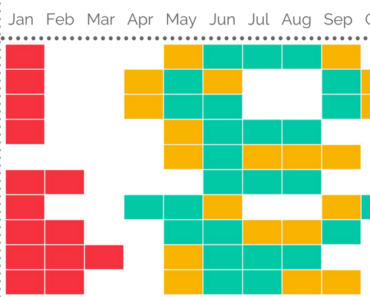Have you ever wondered about the best times to travel to Asia? Whether it’s for the majestic temples, bustling markets, or tranquil beaches, Asia’s diverse landscapes and cultures offer something for everyone. However, picking the right time to visit is crucial to ensure you get the most out of your trip. So let’s look closely at Asia’s peak travel seasons, providing detailed insights to help us plan our next adventure.

This image is property of images.unsplash.com.
Understanding Asia’s Climate Zones
Asia is huge and its climate varies substantially from region to region. We must consider several climate zones, including tropical, subtropical, temperate, and arid zones. Understanding these will help us decide the ideal time to visit various parts of Asia.
Tropical Climate
Regions with tropical climates, such as Southeast Asia and parts of South Asia, experience warm temperatures year-round, with pronounced wet and dry seasons. The wet season, often characterized by heavy monsoon rains, usually lasts from June to September.
Subtropical Climate
Subtropical areas, like southern China and parts of India, experience hot summers, mild winters, and significant seasonal changes. Rainfall patterns also vary, generally wet during summer and dry during winter.
Temperate Climate
East Asia, including parts of China, Japan, and Korea, falls into the temperate climate zone. This zone has four distinct seasons: spring, summer, autumn, and winter, each providing unique travel experiences.
Arid and Semi-Arid Climate
Central Asian countries such as Kazakhstan and Uzbekistan experience arid or semi-arid climates. These areas have very hot summers and very cold winters, making spring and autumn the most favorable seasons for travel.
Southeast Asia: A Year-Round Destination
Southeast Asia encompasses Thailand, Vietnam, Indonesia, Malaysia, and the Philippines. Each country has its peak travel seasons.
Thailand
Thailand’s peak travel season runs from November to February. During this time, the weather is cooler and relatively dry, offering ideal conditions for exploring Bangkok, Chiang Mai, and the islands.
Vietnam
If we aim to discover Vietnam, we should consider visiting from November to April, during the dry season. Northern Vietnam can get quite chilly in winter, while the south remains warm and sunny.
Indonesia
Indonesia’s archipelago spans a large area, resulting in diverse weather patterns. Bali, a popular tourist destination, sees its peak season from April to September, avoiding the heavy rains that arrive from October onwards.
Malaysia
Malaysia differs slightly due to its two distinct parts: Peninsular Malaysia and Malaysian Borneo. The best time to travel Peninsular Malaysia is generally from November to February on the eastern coast and from May to September on the western coast.
Philippines
The Philippines’ peak travel season is from December to May. The weather is mostly dry and sunny, perfect for island hopping and beach vacations.
South Asia: A Cultural Extravaganza
South Asia, including India, Sri Lanka, Nepal, and Bhutan, offers a rich tapestry of cultures, climates, and landscapes.
India
India’s vastness means varied climatic conditions across the country. However, the ideal time to visit most regions is between October and March, avoiding the intense summer heat and monsoon season.
Sri Lanka
We can visit Sri Lanka almost all year round, but aiming for the period from December to March will generally provide the best weather across the island, especially in popular areas like Colombo and Galle.
Nepal
Nepal’s peak trekking seasons are spring (March to May) and autumn (September to November). These periods offer clear skies and moderate temperatures, ideal for exploring the Himalayas.
Bhutan
The best time to visit Bhutan is during spring (March to May) and autumn (September to November). These seasons feature pleasant weather and vibrant festivals.
East Asia: Tradition Meets Modernity
East Asia includes China, Japan, and Korea, each offering unique seasons and experiences.
China
China’s best travel seasons include spring (April to June) and autumn (September to November), offering mild weather. These periods are ideal for visiting landmarks like the Great Wall and Terracotta Army, as well as experiencing cultural festivals.
Japan
Japan’s cherry blossom season in late March to early April is one of its peak travel times, attracting visitors from around the world. Autumn (November to early December) is another excellent period, with spectacular fall foliage.
Korea
Korea is best visited during spring (April to June) for cherry blossoms and autumn (September to November) for colorful foliage. During these times, the weather is temperate and advantageous for exploring Seoul and beyond.

This image is property of images.unsplash.com.
Central Asia: The Silk Road Awaits
Central Asia’s unique blend of Soviet and Persian influences attracts adventurous travelers. Kazakhstan, Uzbekistan, Kyrgyzstan, and Turkmenistan are some of our options.
Kazakhstan
Visiting Kazakhstan is best from European spring to early summer (April to June) and European autumn (September to October) when temperatures are moderate and the weather is dry.
Uzbekistan
Uzbekistan’s peak season is similar, from April to early June and September to early November. These periods allow us to explore historical cities like Samarkand and Bukhara in comfortable weather.
Kyrgyzstan
Kyrgyzstan is exceptionally scenic, with its best travel period being from June to September. During these months, the weather is warm, and mountain passes are clear for trekking.
Turkmenistan
Turkmenistan’s optimal visiting period is spring (March to May) and autumn (September to November), offering moderate temperatures suitable for exploring deserts and ancient ruins.
South Korea: Harmony of Past and Future
South Korea offers historical sites and modern attractions, making it a dynamic travel destination. South Korea’s favorable travel periods are spring (April to June) and autumn (September to November). These seasons offer comfortable weather and stunning natural scenery.
Spring – April to June
Spring in South Korea is characterized by mild temperatures and blooming flowers, including the famous cherry blossoms. It’s a delightful time to visit cities like Seoul, Busan, and Jeju Island.
Autumn – September to November
Autumn, on the other hand, brings a breathtaking display of fall foliage, making it an ideal time for hikes in the country’s beautiful national parks. The weather is cool and perfect for outdoor activities.

This image is property of images.unsplash.com.
Summary Table of Peak Travel Seasons
To make it easier to remember the peak travel seasons, let’s present the information in a table:
| Region | Country | Best Months to Visit |
|---|---|---|
| Southeast Asia | Thailand | November to February |
| Southeast Asia | Vietnam | November to April |
| Southeast Asia | Indonesia | April to September |
| Southeast Asia | Malaysia | November to February (East Coast), May to September (West Coast) |
| Southeast Asia | Philippines | December to May |
| South Asia | India | October to March |
| South Asia | Sri Lanka | December to March |
| South Asia | Nepal | March to May, September to November |
| South Asia | Bhutan | March to May, September to November |
| East Asia | China | April to June, September to November |
| East Asia | Japan | Late March to early April, November to early December |
| East Asia | Korea | April to June, September to November |
| Central Asia | Kazakhstan | April to June, September to October |
| Central Asia | Uzbekistan | April to early June, September to early November |
| Central Asia | Kyrgyzstan | June to September |
| Central Asia | Turkmenistan | March to May, September to November |
| South Korea | South Korea | April to June, September to November |
Tips for Traveling During Peak Seasons
When planning our trip during peak travel seasons, remember a few tips to ensure an enjoyable experience:
Book in Advance
Accommodations, flights, and tours can fill up quickly during peak seasons, so it’s a good idea to book well in advance to secure our preferred options.
Pack Accordingly
Peak seasons imply optimal weather, but it’s still essential to pack appropriately. Bring comfortable clothing, a good pair of walking shoes, and any necessary weather-appropriate gear.
Be Prepared for Crowds
Popular tourist spots can get crowded during peak seasons. Arrive early at major attractions to avoid long lines and enjoy a more personal experience.
Stay Flexible
While it’s great to have an itinerary, leave some room for spontaneity. Weather changes, local events, and unexpected opportunities can enhance our travel experience.

Off-Season Alternatives
If we prefer avoiding crowds and possibly saving on costs, consider traveling during the shoulder or off-seasons instead:
Shoulder Seasons
Shoulder seasons are the periods just before or after the peak season. For example, visiting Thailand in October or March can offer good weather without the peak season crowds. Additionally, prices for flights and accommodations may be lower.
Off-Season Savings
Off-season travel, while riskier weather-wise, can provide unique experiences. For instance, visiting Japan during its winter season could offer beautiful snow-covered landscapes and winter activities like skiing.
Conclusion
Understanding Asia’s diverse peak travel seasons is crucial in planning an unforgettable trip. Each region and country has its own optimal times for unique cultural, historical, and natural experiences. By knowing when to go and what to expect, we can maximize our enjoyment and create lasting memories.
So let’s pack our bags and prepare for an adventure, taking into account the beauty and excitement that each season in Asia has to offer!



